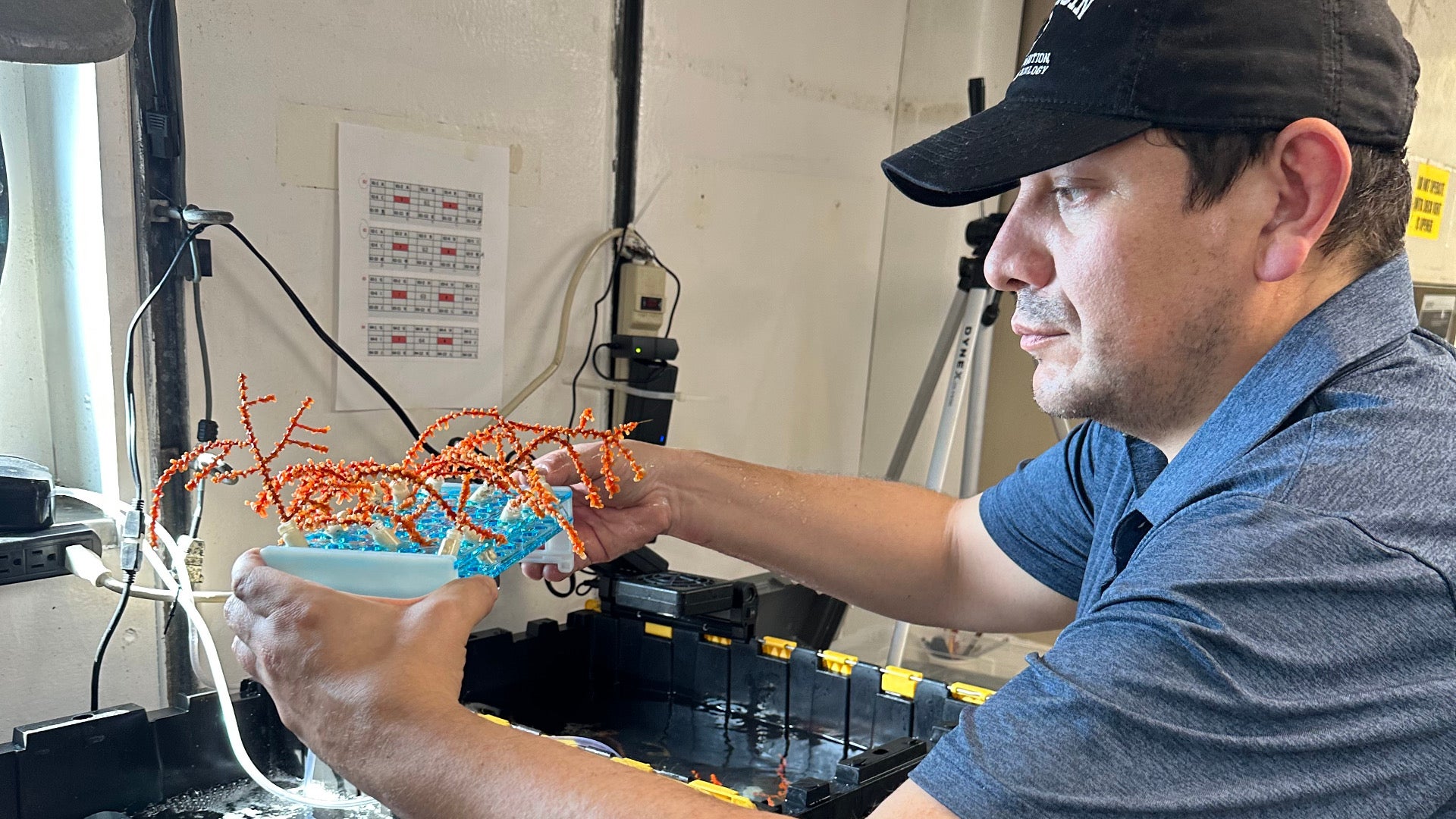
Coral Science
Carlos Prada (URI) and Howard Lasker (UB)
Photo Credit: NOAA MDBC
Overview
This project will conduct activities to restore injured mesophotic seafloor habitats by establishing the baseline information necessary to design restoration activities in deep ocean coral communities. Recovery of coral populations in mesophotic areas in the Gulf of Mexico (GoM) can be divided into three modalities: naturally occurring recruitment, assisted recruitment, and colony propagation. The natural modes of reproduction in corals include broadcast spawning, brooding, or fragmentation; and each of these may require a different propagation strategy. Furthermore, while restoration techniques are well developed for scleractinian corals, techniques for the propagation of octocorals have only been undertaken in small research settings (Prada and Hellberg 2013) and the generality and scalability of those techniques are unknown. This work initially focuses on filling essential gaps in our knowledge of three of the most affected species of corals, Muricea pendula, Swiftia exserta, and Thesea nivea, and then developing and testing techniques to restore GoM these coral populations. These initial tests will lead to the first propagation of corals in the GoM after the DWH oil spill.
In 2022 (OECI Year 4), we began work to test new potential techniques that may work in mesophotic ecosystems, using locations that allow ease of access for trials of the different approaches. We are also participating in field expeditions scheduled by NOAA to collect coral material for reproduction and genomic analysis, to document fecundity levels and deploy artificial settling plates to enhance the capture and growth of in situ recruits. These last two activities will allow us to estimate potential levels of recruitment of affected and unaffected populations. In 2023 and 2024 URI and UB are continuing work to identify the desired techniques to be used in mesophotic ecosystems, coordinating closely with teams of technical divers to start field tests propagating corals of the three most affected species and continue collecting settling tiles to score recruitment levels. This collaborative work includes close engagement with scientists at NOAA, USGS, and Smithsonian NMNH. We will also estimate and document patterns of sexual reproduction and recruitment levels to evaluate the potential capacity of these populations to recover naturally and to apply those lessons to the propagation techniques we are testing.

